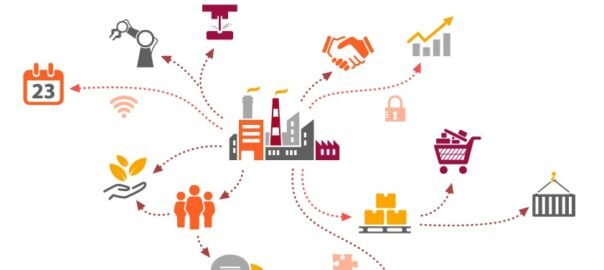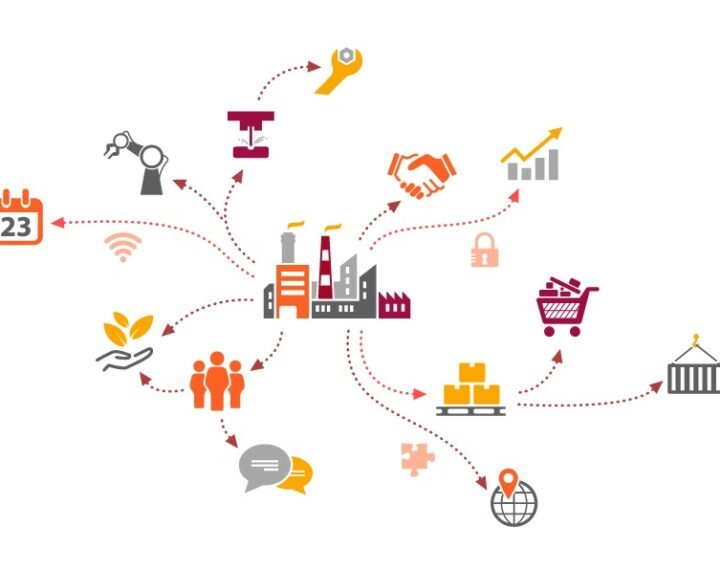
From Factory to Front Door: How Smart Supply Chains Power Business Success
Seamless Supply chain is the backbone of the retail and ecommerce sectors. It is an interconnected system that links all the processes, entities, and resources involved in turning raw materials into finished goods and getting them into the hands of customers. This includes every phase—from sourcing and production to warehousing, logistics, and final delivery.
To ensure this complex system runs efficiently and effectively, businesses rely on efficient supply chain management [SCM], strategies, the process of overseeing the movement of goods, information and services involved in a product or service from the procurement of raw materials to delivering the final product to the customer.
For the supply chain process to run efficiently, the 4 P’s of supply chain- Planning, Procurement, Production and distribution are crucial.
- Planning– This includes predicting demand, establishing production goals, and creating strategies for sourcing, manufacturing, and distribution.
- Procurement– Obtaining raw materials, components, and other essential inputs from suppliers is a key part of the process.
- Production- converting raw materials into finished goods constitutes a core aspect of manufacturing.
- Distribution- Transportation and delivery of finished products to customers or retail partners are part of the distribution process.
A strong supply chain management strategy is vital in the retail and e-commerce sector, as it helps retailers enhance customer satisfaction while optimizing efficiency and reducing costs. A strong supply chain also benefits your company in several key ways, including Lower operational costs, enhanced customer satisfaction, stronger quality assurance, streamlined inventory processes, quicker delivery turnaround, and more effective internal communication.
The supply chain process differs for retail and e-commerce sectors, across geographies. The difference lies in how products are procured, handled and distributed to consumers. The retail sector relies on physical storefronts as the final point of sale, whereas e-commerce operates through online platforms and often emphasizes direct-to consumer or dropshipping models, which demand streamlined logistics and efficient order fulfilment.
For instance, Amazon and Reliance Retail Limited follow different supply chain strategies. Amazon operates on a global scale, managing a vast and diverse product range with a supply chain built for speed, reliability, and efficiency. It heavily leverages automation, robotics and advanced technologies across its logistics network to streamline operations and minimise costs. With a worldwide network of fulfilment centres and distribution hubs, Amazon ensures rapid delivery and high inventory availability across International markets. On the other hand, Reliance Retail Limited’s supply chain strategy, which is regionally focussed, prioritizes direct sourcing from local vendors. The company utilizes an extensive network of collection and processing centres to ensure the efficient distribution of goods to its retail outlets. By establishing a seamless end-to-end value chain for fresh produce, Reliance Retail leverages advanced technology to optimize inventory management and logistics. Furthermore, it strengthens its product offerings through strategic partnerships with both local and international suppliers.
We’ve gained insight into how the supply chain process differs between the retail and e-commerce sectors. Now let’s take a look at how it varies across different industries.
The supply chain processes in the manufacturing and pharmaceutical industries differ significantly due to the nature of the products and regulatory requirements. In manufacturing, the supply chain typically involves the sourcing of raw materials and components, followed by the production of finished goods through either discrete or process manufacturing. These products are then distributed to retailers, distributors, or end consumers, with systems in place to manage returns and recycling. On the other hand, the pharmaceutical supply chain is more complex and highly regulated. It begins with the procurement of raw materials such as active pharmaceutical ingredients [APIs] and excipients, followed by drug and vaccine production under strict Good Manufacturing Practice [GMP] standards. A critical component is the storage and warehousing stage, which often requires stringent environmental controls, including cold chain logistics for temperature – sensitive products. Distribution must ensure speed and traceability, delivering products to pharmacies, hospitals and healthcare providers. The pharmaceutical sector also emphasizes real-time product availability, efficient returns management, and redirection of supplies based on demand fluctuations. Unlike general manufacturing, the pharmaceutical supply chain is burdened with extensive regulatory compliance, including adherence to GDP and GCP standards, and requires robust quality control throughout to ensure patient safety. The need for specialized logistics and unwavering focus on quality and efficacy sets the pharmaceutical supply chain apart from standard manufacturing operations.
Inventory management is an essential part of the supply chain process. It involves planning, stocking, and managing inventory to maintain optimal stock levels, reduce costs, and effectively fulfill customer demand. Effective inventory management contributes to cost reduction, enhanced productivity, improved customer experience, increased profit margins, and greater resilience in the face of supply chain disruptions. Common inventory management strategies include Just-In-Time (JIT), Economic Order Quantity (EOQ), Materials Requirement Planning (MRP), and Days Sales of Inventory (DSI).
Fulfillment is the final step in the supply chain process. It involves receiving customer orders, processing them, and delivering the product or service. This is the stage where the product moves from the business to the customer. When the fulfilment process is executed well, it positively impacts the customer experience, reduces costs, increases efficiency, and serves as a key differentiator in a competitive market.
In Conclusion, a well-optimized supply chain is the backbone of both retail and e-commerce sectors, ensuring efficiency, customer satisfaction, and cost-effectiveness. Whether it’s Amazon’s global logistics network or Reliance Retail’s regionally-focused model, each business tailors its strategy to meet specific needs and demands. The importance of the 4 P’s—Planning, Procurement, Production, and Distribution—cannot be overstated, as they form the foundation of a seamless supply chain. As industries evolve, embracing advanced technology and adaptive strategies will be key in driving growth, maintaining quality, and responding to changing market dynamics with agility and precision.






